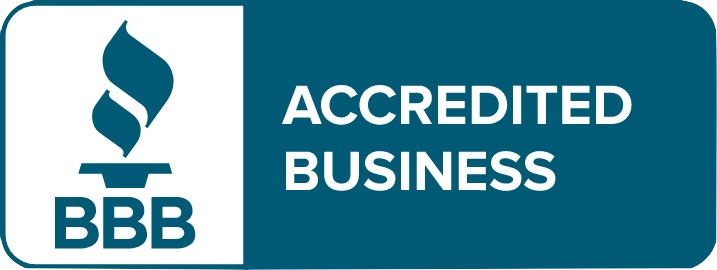Whether you’re an HR manager, hiring director, or business owner working with a recruiting partner like Goldbeck Recruiting, understanding what shortlisting means (and how to do it well) can dramatically improve the quality and speed of your hiring process.
What Does “Shortlisting” Mean in Recruitment
In simple terms, shortlisting refers to the stage in the recruitment process where hiring professionals select the most suitable applicants from all who applied. It’s essentially the bridge between receiving resumes and scheduling interviews.
The shortlist typically includes five to ten candidates—individuals who meet both the required qualifications and the organization’s broader expectations for fit, potential, and values.
At this stage, recruiters move beyond keyword matching. They evaluate who stands out, who aligns with the company’s culture and objectives, and who demonstrates the potential to succeed long-term.
Why Shortlisting Matters
Shortlisting isn’t just about speed—it’s about accuracy. Without a disciplined approach to shortlisting, organizations risk wasting time interviewing unqualified candidates or, worse, missing out on hidden talent.
A well-constructed shortlist:
- Saves time and resources by ensuring only the best-fit candidates reach interview stage
- Enhances hiring consistency through standardized evaluation criteria
- Improves candidate experience by reducing delays and uncertainty
- Reduces bias through structured assessment and transparent decision-making
In other words, shortlisting ensures the recruitment process is not only efficient but also fair and strategically aligned.
The Role of Shortlisting in the Overall Recruitment Process
As discussed in our recent article on the recruitment process as an integrated system rather than a single event, shortlisting sits at the decision-heavy middle of that system. It connects sourcing (where candidates are identified) with selection (where offers are made).
If sourcing is about casting the net, shortlisting is about sorting the catch. It’s where intuition meets structure—where recruiters apply both data-driven criteria and professional judgment to move the process forward.
How Recruiters Shortlist Candidates
Shortlisting can vary by industry, but the core principles remain the same. Here’s how professional recruiters typically approach it:
- Define clear criteria
Before reviewing a single resume, recruiters identify what “qualified” means for the specific role. This includes essential requirements (e.g., certifications, years of experience, technical skills), desirable attributes (e.g., leadership potential, industry familiarity, adaptability), and cultural alignment factors (e.g., values, communication style, working preferences). This foundation prevents subjective or ad hoc decisions later on. - Use structured evaluation tools
Recruiters often use scorecards, ATS systems, or custom matrices to rate each candidate objectively. For example, they may use a 0–5 scale for each requirement, weighted scores for essential vs. nice-to-have skills, and flags for critical mismatches such as salary expectations or location conflicts. - Combine technology with human judgment
Applicant Tracking Systems can quickly filter resumes by keywords or experience levels—but human review remains essential. The best candidates don’t always use the same keywords recruiters expect. That’s where a recruiter’s experience comes in—to identify transferable skills, unconventional career paths, or resumes that deserve a second look. - Assess soft skills and motivation
Beyond technical criteria, recruiters look for indicators of soft skills and drive—communication quality, tone of cover letter, or demonstrated progression in past roles. A candidate who’s adaptable, curious, and motivated to grow can often outperform someone with a perfect resume but low engagement.
Read more: Identifying the Best Leaders: Soft Skills vs. Hard Skills
- Build a balanced shortlist
Recruiters aim for a shortlist that represents a mix of strong technical fits ready to contribute immediately, high-potential candidates who may need minor upskilling but show leadership promise, and strategic wildcards who bring fresh perspectives or cross-industry experience. This mix allows hiring managers to evaluate options strategically rather than picking from near-identical profiles.
Shortlisting Criteria: What to Include
Every organization will customize their own shortlist criteria, but here are the most common (and effective) factors:
| Category | Criteria Examples |
| Qualifications | Degrees, certifications, licenses |
| Experience | Relevant years in similar roles, leadership or project experience |
| Skills | Technical, analytical, communication, software tools |
| Cultural Fit | Alignment with company values, collaboration style, adaptability |
| Career Goals | Alignment between candidate ambitions and organizational trajectory |
| Availability & Logistics | Location, willingness to relocate, work authorization |
| Compensation Alignment | Expectations compatible with budget and role level |
The more precisely these criteria are defined upfront, the smoother the shortlisting process becomes.
Common Mistakes in Shortlisting
Even experienced hiring teams can make errors that limit success. Some of the most frequent include:
- Over-reliance on keywords
A resume that doesn’t use the “right” phrases might still represent a perfect match. An overly rigid keyword search can eliminate great candidates prematurely. - Ignoring soft skills
Technical skills are easier to measure, but interpersonal traits—communication, leadership, problem-solving—are often the difference between a good hire and a great one. - Rushing the process
Shortlisting isn’t just a box to check. Taking an extra hour to compare top candidates against cultural and long-term fit can prevent costly hiring mistakes later. - Unclear communication with hiring managers
Misalignment between recruiters and department heads on what “qualified” means can result in shortlists full of mismatched candidates. Regular feedback loops are key.
Shortlisting in Collaboration with a Recruiting Agency
Partnering with an external recruiter like Goldbeck Recruiting can elevate the shortlisting process from tactical to strategic. Here’s how:
- Access to a larger pre-qualified talent pool – Recruiters maintain networks of vetted professionals across industries, saving weeks of sourcing time.
- Specialized market insight – Agencies understand the nuances of industry standards, salary benchmarks, and transferable skills.
- Objective assessment – Recruiters can evaluate candidates without internal biases or departmental pressures.
- Candidate relationship management – Skilled recruiters maintain professional rapport with shortlisted candidates, keeping them engaged while clients make decisions.
This combination of structure, insight, and candidate care often results in faster placements with stronger long-term retention.
Best Practices for Employers Reviewing Shortlists
Once your recruiter delivers a shortlist, how you handle it matters. Here are a few best practices:
- Respond quickly. Top candidates move fast. A delay in feedback can mean losing them to another offer.
- Provide detailed feedback. If no one feels like a fit, explain why. Recruiters can recalibrate much more effectively with context.
- Keep communication open. Even shortlisted candidates who aren’t selected should leave the process with a positive impression—future opportunities may arise.
- Align stakeholders. Ensure all decision-makers understand the shortlisting criteria before moving to interviews to prevent inconsistent assessments.
Shortlisting Meaning in a Modern Context: Beyond Resumes
Shortlisting today goes beyond scanning resumes—it reflects a company’s brand, efficiency, and fairness. Modern shortlisting strategies incorporate:
- Competency-based assessment (evaluating behaviors and outcomes)
- Blind shortlisting (removing identifying details to reduce bias)
- AI-enhanced tools (to analyze patterns, not just keywords)
- Continuous improvement (tracking which shortlist candidates ultimately succeed in the role)
These innovations don’t replace human judgment—they strengthen it.
Final Thoughts: Turning Shortlists into Success Stories
In the broader recruitment process, shortlisting might seem like a small step, but it’s the point of greatest leverage. A thoughtful shortlist sets the tone for interviews, hiring decisions, and even future retention.
By combining structured criteria, professional insight, and open collaboration between recruiters and employers, organizations can transform shortlisting from a task into a talent strategy.
When done right, shortlisting doesn’t just find candidates—it builds teams.




